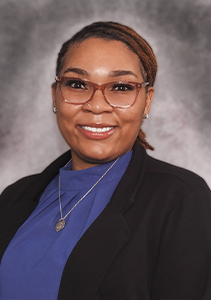For years, the 库克县卫生局 was on life support. The Near West Side system depended on a steep annual subsidy from taxpayers and couldn’t shake the perception it was the place of last resort for care.
But the creation of an innovative health insurance plan for Medicaid recipients has brought in so much new revenue and insured patients that the system is looking to build new facilities and talking about expanding services, goals that were mere hopes in the past.
The health plan, called 县关怀, generated about $653 million in revenue for the fiscal year ended Nov. 30, about half of the total haul for the health system, according to an unaudited financial statement. That’s up from $117.5 million in 2013, which represented about 12 percent of the system’s overall revenue. Meanwhile, the county subsidy has plummeted from a high of $481.5 million in 2009 to a projected $164 million this year, according to the Civic Federation, a Chicago-based fiscal watchdog group.
“There’s no doubt that the expansion of CountyCare has transformed the Cook County health system’s financial position,” says Laurence Msall, president of the Civic Federation.
The health system plans to break ground next year on a long-awaited outpatient building on the John H. Stroger Jr. Hospital campus to house the crowded and aging Fantus Clinic and administrative offices. The county is footing the $100 million estimated cost, a health system spokeswoman says. Earlier this year, health system officials floated the idea of acquiring nursing homes to serve patients once they leave the hospital. The health system also is studying services at its outpatient clinics, including the projected need for specialty care and diagnostic services there.
Now comes the hard part. The system must hold on to these newly insured patients, who for the first time have the financial ability to seek care elsewhere. And it must focus on keeping them healthy to hold medical expenses down, experts say.
“We will no doubt have to continue to focus on the patient experience,” says Dr. John Jay Shannon, CEO of Cook County Health. As CountyCare matures, Shannon says the health system wants to expand access and grow patient referrals to the health system.
The insurance plan started as a pilot program with Medicaid in 2012. The goal was to transform a place where low-income patients typically waited until they were sick before seeing a doctor and instead wound up in the ER, costing the cash-strapped system more money than if they had regular care. The health plan’s enrollment was fueled by the state Medicaid program requiring recipients to join a managed care plan like CountyCare. Its network includes the health system’s two hospitals, Stroger Hospital on the Near West Side and 公积金医院 on the South Side, as well as more than 30 other hospitals and over 130 初级卫生保健 sites.
With nearly 180,000 members as of April, CountyCare has become the second-biggest Medicaid managed care plan in the Chicago area. It trails only Chicago-based Family Health Network, a longtime Medicaid managed care plan, and besting even Blue Cross & Blue Shield of Illinois, the state’s dominant insurer, according to the Illinois Department of Healthcare and Family Services, which administers Medicaid.
The state caps enrollment for managed care plans in the Chicago area at 200,000, a limit CountyCare is approaching.
MORE INSURED THAN NOT
 Due to the Affordable Care Act, for the first time there are more insured than uninsured patients within the county health system. In 2013, 54 percent of patients were “self-pay,” which typically means uninsured, and 32 percent were on Medicaid. From January to April this year, just 32 percent of patients were self-pay and 50 percent were on Medicaid.
Due to the Affordable Care Act, for the first time there are more insured than uninsured patients within the county health system. In 2013, 54 percent of patients were “self-pay,” which typically means uninsured, and 32 percent were on Medicaid. From January to April this year, just 32 percent of patients were self-pay and 50 percent were on Medicaid.
Nevertheless, CountyCare membership declined in the fall before climbing again in December. Steven Glass, who oversees managed care at Cook County Health, attributes the losses to members not renewing on time or becoming ineligible. He estimates that about 10,000 people are up for renewal every month.
“It’s something we’re really watching,” Glass says.
If they don’t choose a specific plan, the state assigns them to one. As of April 27, 74 percent of CountyCare members were assigned by the state, while the rest voluntarily chose to stay with the plan, data show. That also boosted the plan’s enrollment.
Beefing up services to keep these patients healthy and happy is a must, experts say.
“The smart players like Cook County have historical relationships with this population,” says Barbara Otto, CEO of Chicago-based nonprofit Health and Disability Advocates. “They know they might leave, but they know they’ll be back.”
阅读文章 克雷恩的芝加哥业务.


